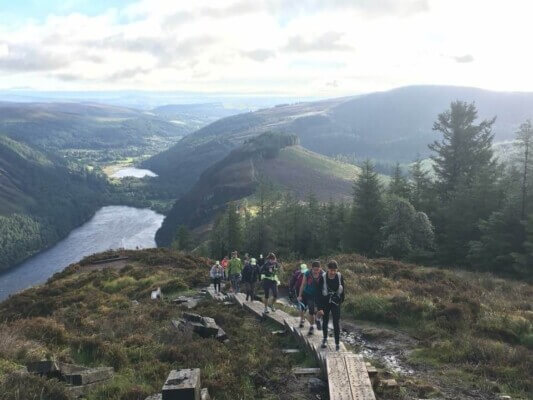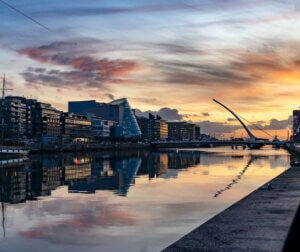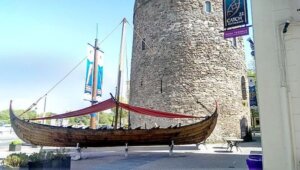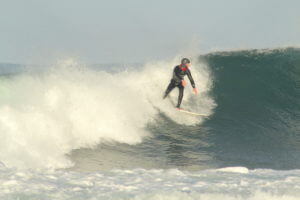Are you curious about exploring other parts of Ireland outside of Dublin?
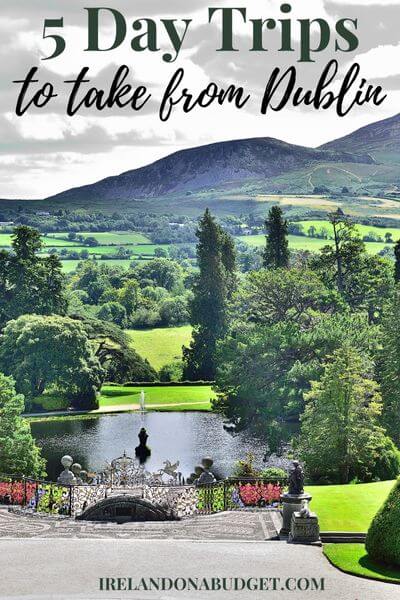 This post and page contain affiliate links and I may earn compensation when you click on the links at no additional cost to you.
This post and page contain affiliate links and I may earn compensation when you click on the links at no additional cost to you.
Did you know that you can take day trips from Dublin that won’t cost you a fortune?
What’s even better, you get to explore a whole other side of Ireland that is equally as intriguing as its capital city.
While you can certainly explore day trips from Dublin on your own by car, for most first-time travelers to Ireland, taking an organized tour is a good way to see Ireland, plus all of the tours mentioned in this blog are fairly inexpensive.
You may not be interested in renting a car anyway. In fact, a rental car is nice but not a necessity.
Ireland’s public transportation system is another way to see Ireland, either by bus or train.

- Book the best tours and guides on Tripadvisor, Viator or GetYourGuide
- Get reliable travel insurance with Travel Insurance Master
- Get the best flight tickets with Aviasales
- Rent a comfortable car via Discovercars
- Find the best accommodation on booking.com or BandBIreland
Here is what I recommend for day trips from Dublin.
1. Dublin to Belfast
Years ago, when the “Troubles” were consuming Northern Ireland and badly affecting not only its economy but its ability to attract tourists, most people were just too afraid to venture across the border.
These days, it’s quite easy to travel from the Republic of Ireland to Belfast.
And it’s safe, too.
Many first-time tourists to Ireland ask about security and to be honest, you can literally drive across the border and cross by bus or train without encountering a checkpoint.
The trip from Dublin to Belfast will only take you two hours.
Just hop on the Enterprise train from Connolly station in Dublin, as documented by Mark Smith from The Man in Sixty-One.
The train is run by Iarnrod Eireann (Irish Rail) and the Northern Ireland transportation company, Translink.
A round-trip ticket for one adult is approximately €31.98 (although you can pay slightly more if you book first-class tickets).
There’s a whole lot to see in today’s Belfast, but you’ll be reminded of its tragic past, too.
Take a black taxi cab tour of West Belfast and, depending on the driver’s religious affiliation, you might get a slightly different take on the Northern Ireland conflict.
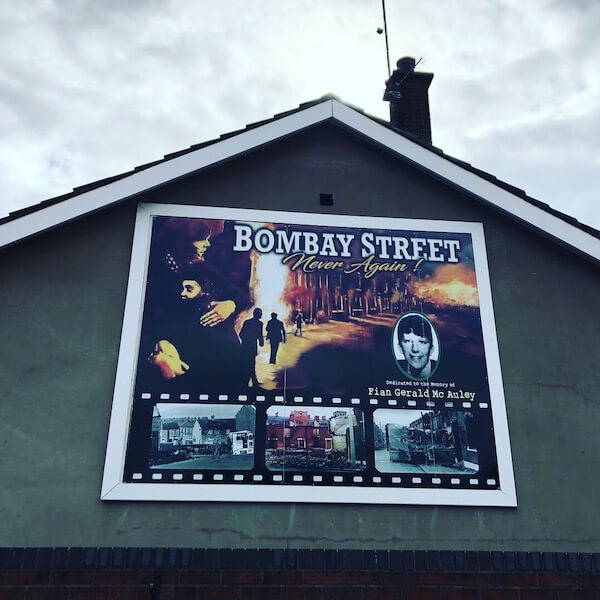
No matter their background, all of them are hugely helpful in explaining the 30-year conflict in Northern Ireland and giving visitors an inside look into life in West Belfast, including the Protestant neighborhood of Shankill and the Catholic section, the Falls Road.
There are many tourist attractions to enjoy in Belfast.

The Hop On Hop Off Belfast 1-day tour will take you to all of the city’s major attractions, including the Titanic Quarter, the Stormont Parliament buildings, St. George’s Market, the Ulster Museum, the Crumlin Road Jail, and much more.
Tickets cost between £7 and £29 per person.
Here are some of what you can expect to see in this charming city.
See Dublin on a Budget with Aer Lingus Vacations
The wildly popular Titanic Belfast is a museum that is devoted entirely to the ill-fated luxury liner. Give yourself a few hours to go through this extensive attraction.
Other popular attractions in Belfast include City Hall, a classical Renaissance-style building that was built in 1906.
Take the free, 45-minute guided tour of City Hall and learn about the sumptuous marble and stained-glass windows of the entrance hall and rotunda, along with other fine features of the building.
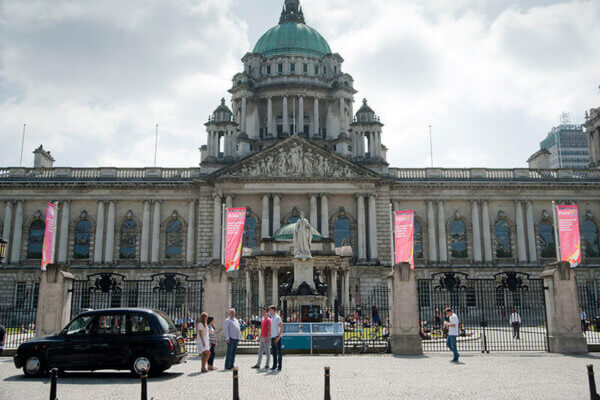
Be sure to visit the Titanic Memorial Garden and other monuments on the grounds of City Hall.
While it’s not on the Hop On Hop Off bus tour of sites to see, the Grand Opera House is well worth a visit on your day trip from Dublin.
This is one of the city’s finest Victorian buildings, which opened in 1895.
It was completely refurbished in the 1970s, having sustained severe damage during Northern Ireland's conflict.
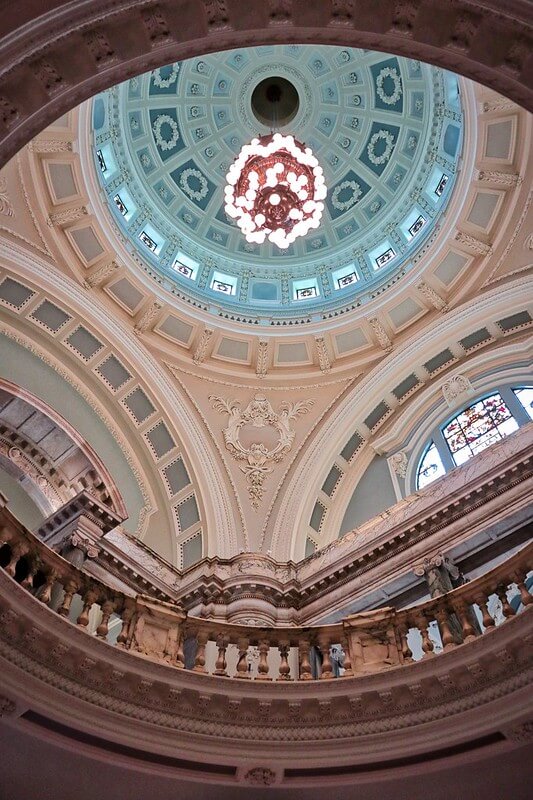
Be enthralled with its exquisite wood and plasterwork, as well as the carved elephant heads that frame the private boxes in the theater.
Tours start at 10:30 a.m. in the theater foyer.
Tickets cost £12 for adults, £9.50 for seniors and children under 16, and £7 for the unemployed. Complimentary tickets are provided for those with disabilities.

If you want to get a taste of the excellent food that’s available in Belfast and throughout Northern Ireland, be sure to stop by St. George’s Market.
Every Friday since 1604, food has been available at this iconic attraction. Sample some of the delicious food on hand or just sip a cup of coffee and watch the world go by.
If you’d rather have someone else do the planning for you, there are a number of day tours you can take from Dublin to Belfast.
2. Dublin to County Wicklow
Known as the “Garden of Ireland,” County Wicklow is a mere 30-minute drive from the capital, which makes it an ideal destination when you’re taking a day trip from Dublin.
There are lots of historic monuments, grand houses, and other attractions to see in Wicklow, not to mention the famous Glendalough, a 6th-century monastic settlement founded by St. Kevin that is often referred to as “Monastic City” because of the many medieval buildings that remain there.
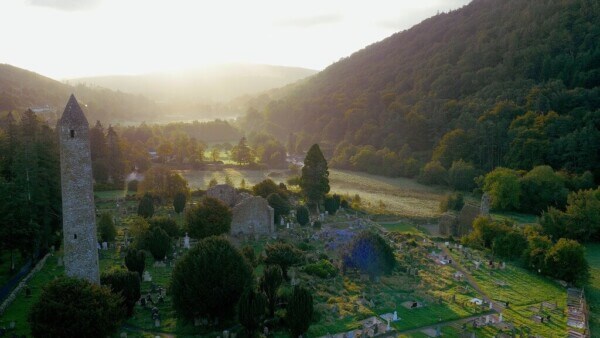
The site includes a 98-foot round tower and a number of churches, including the cathedral, which is the site’s largest building, and much more.
Speaking of grand houses, don’t forget to visit a number of significant attractions in Wicklow.
They include Russborough House and Parklands in Blessington. It is said to be the longest house in Ireland, with a facade measuring over 700 feet.
The house, designed in the Palladian style, was originally owned by Joseph Leeson, the 1st Earl of Milltown. It contains an extensive range of fine art collected by the British couple Sir Alfred and Lady Beit.
Guided house tours are available throughout the year, except in January and February when the house is closed.
Admission for adults is €12, seniors and students €9, and children €6 (under 5s are admitted free). Tickets for a family of 6 are €30.
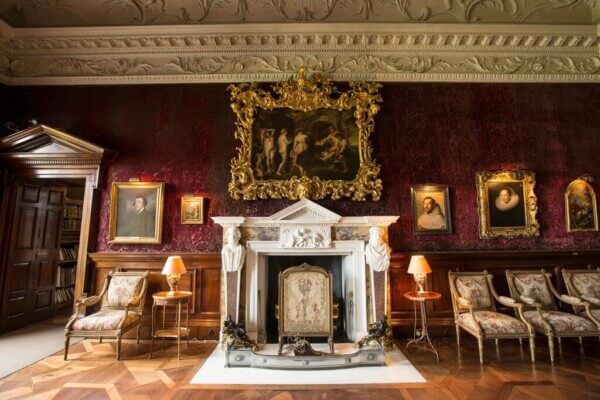
In addition to the house, another popular attraction at Russborough is the large beech hedge maze, which measures about 6,000 feet long. This is a favorite for families with young children.
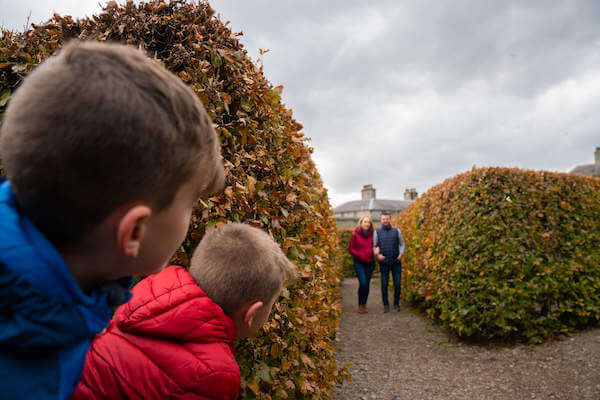
The maze is open every day from March through November. Be sure to take a token and a map with you when you enter the maze, and a mobile phone in case you get lost!
Also, part of this amazing property is a children’s playground; a wooded fairy trail, complete with quaint little fairy homes; a mile-long walking trail; a tree trail; and a walled garden.
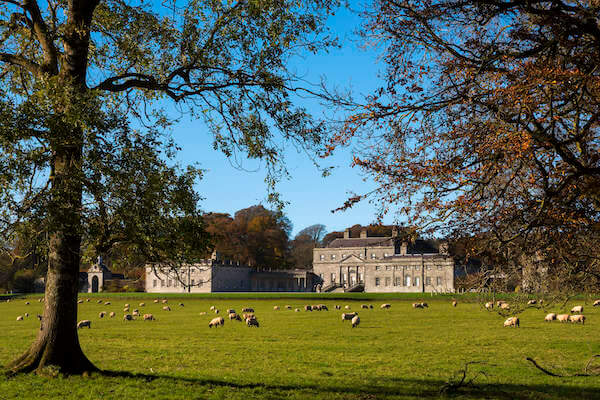
Admission to the parkland for an individual is €5 and for a family of 6, it is €15. Children under 5 are admitted free.
The Bird of Prey Centre is also located on the grounds of Russborough, as is a collection of works from local artisans.
Other stately homes to visit on your day trip from Dublin include the Powerscourt Estate, a 20-minute drive from the capital.
Once a 13th-century castle, it includes an expansive 47 acres of landscaped gardens.
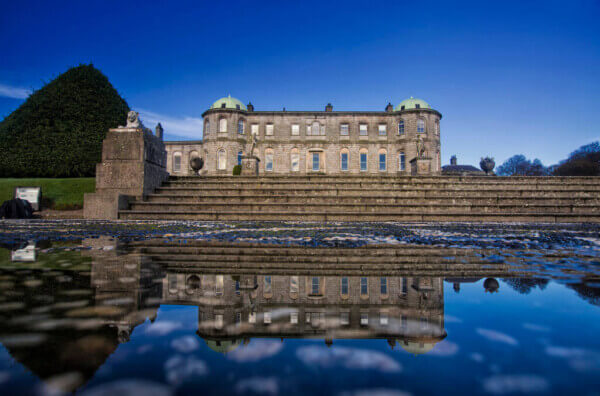
A fire in 1974 badly damaged this beautiful property, which was renovated extensively in 1996. As a result, there are only two rooms open to the public that are in their original state.
Visitors to Powerscourt are encouraged to explore the magnificent gardens, which in 2010 was voted number 3 in the Top 10 Gardens of the World by National Geographic.
The gardens were inspired by the Italian Renaissance and the great estates of France and Germany.
Kilruddery House & Gardens is often on the itinerary of many visitors who take day trips from Dublin. The large country estate is located on the outskirts of Bray, about 12 miles from the city.
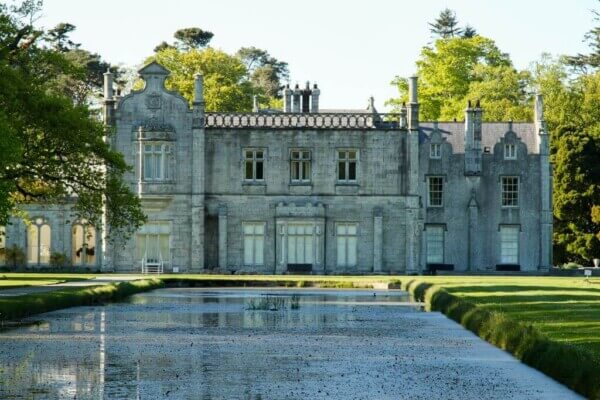
The Elizabethan-style house belongs to the Brabazon family, who have lived there since the 17th century.
Guided tours of the house are available from May through September. Tours begin at 1 p.m. and at 3 p.m. Monday through Thursday and at 1, 2, and 3 p.m. on Saturdays and Sundays.
During the months of April and October, tours are available only on Saturdays and Sundays at the times noted above.
Organized day trips from Dublin to County Wicklow are readily available.
The popular ones include the “Splendour of Wicklow” from Darby O’Gill Tours, which is €25 if you pre-book online; the “Wild Wicklow” tour for €33; the GrayLine “Glendalough & Wicklow Mountains Day Tour” for €29.70, and the Small-Group Wicklow, Powerscourt, and Glendalough Day Tour from Dublin for $44.38.
3. Dublin to Newgrange and the Hill of Tara
Other popular day trips from Dublin include a visit to County Meath and the surrounding Boyne Valley area, which is considered by many to be the birthplace of Irish civilization.
At Newgrange, you will find the finest Stone Age passage tomb in Ireland, considered one of the most important prehistoric sites in Europe.
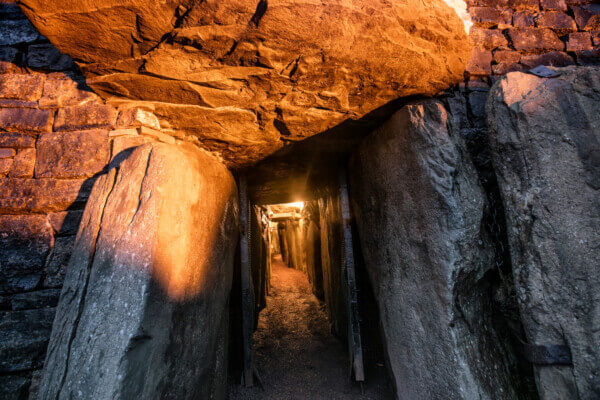
The site dates from around 3,200 BC, which puts its creation ahead of the Egyptian pyramids.
The passage tomb is part of a larger Neolithic complex called Bru Na Boinne (when translated, it means Boyne Palace).
Brú na Bóinne also includes two other sites, known as Knowth and Dowth. You must go to the visitor center to get access to the other sites.
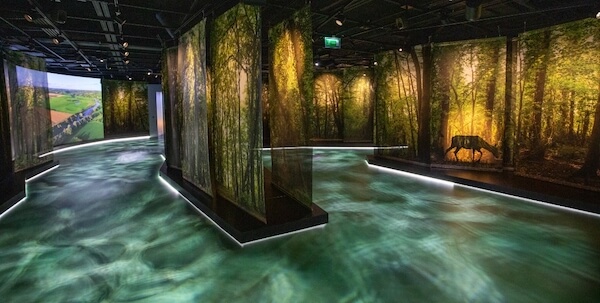
Each year, between Dec. 18 and Dec. 23 at 8:58 a.m., visitors come to Newgrange to witness the illumination of its passage and chamber by the Winter Solstice sun.
Historians say that the tomb’s precise alignment with the sun suggests the site was also used as a calendar in ancient times.
Before heading off to the Hill of Tara, which is about 15 miles away, you might want to stop off at the Battle of the Boyne site.
This is where 60,000 soldiers from the armies of King James II and King William III, otherwise known as “William of Orange,” battled it out in 1690.
The ultimate defeat of James, who sailed off to France shortly afterward, sealed the fate of Irish history forever, making the North of Ireland predominantly Protestant. In addition, James remains the last Catholic monarch to rule England.
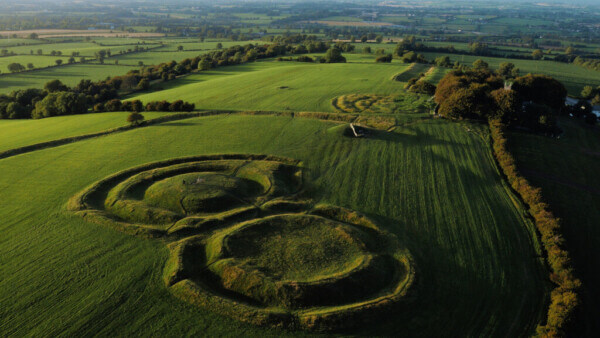
Tara is one of Ireland’s most popular attractions and is known as the inauguration site of Ireland’s 142 high kings, until the arrival of Christianity by St. Patrick.
It consists of numerous monuments from the Neolithic through the Iron Age periods.
Structures of importance include a passage tomb, known as the “Mound of the Hostages,” as well as other burial mounds, round enclosures, and a standing stone, known as the “Stone of Destiny.”
The site is free for all to explore.

Organized day trips from Dublin to Newgrange and the Hill of Tara include the following:
- Celtic Boyne Valley Day Trip from $72.47;
- Boyne Valley:Newgrange (includes all the sites in Bru na Boinne as well as Monasterboiec) from $72.77;
- Newgrange Tours by Mary Gibbons for €55 (adults); and
- Private Group Tours of the Boyne Valley Area from €590 per group
4. Dublin to the Cavan Burren Park
Most tourists have heard of the Burren in Co. Clare, but did you know that there is an equally beautiful spot in Co. Cavan that makes for another one of those great day trips from Dublin?
It’s called the Cavan Burren Park, which is located close to the village of Blacklion on the Cavan/Fermanagh border.
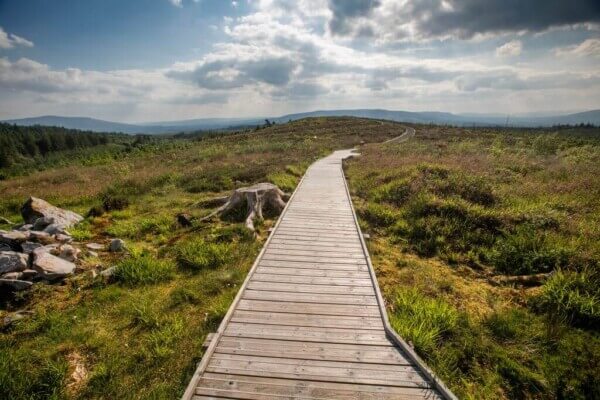
The first settlers to the area arrived here around 4,500 BC, clearing the forestry and creating settlements. Evidence of their time there can be found in monuments like the “Giant Grave” wedge tomb, as well as the remains of old walls.
On your day trip from Dublin, you can enjoy the beauty of the outdoors on over 6 miles of walking trails, all highlighting this area’s prehistoric heritage.
The longest trail is called the Cavan Way, which is 16 miles long and runs right through the park.
Here’s a sampling of what you’ll see at the park.
The Cavan Burren Park is free to visit and is ideal for outdoor enthusiasts. Check out the informative visitor center nearby. Guided tours of the park are available, as well as the nearby Marble Arch Caves UNESCO Global Geopark and other sites such as the Shannon Pot and the Cuilcagh Mountain Park.
Since there are no longer official day tours from Dublin to the Cavan Burren, the only way to get there is by rental car.
5. Dublin to the Midlands
The Midlands is a part of Ireland that many visitors skip over, especially in their haste to get from one coast to the other.
However, there is so much to explore in the heartland of Ireland that taking a day tour isn’t nearly enough.
But it will still give you a taste of the many attractions in this special part of the country.
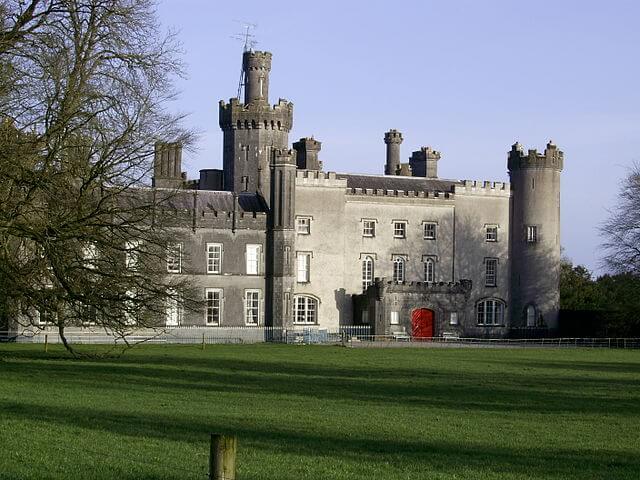
Make Tullynally Castle in County Westmeath the first stop on your day trip from Dublin to the Midlands.
The 17th-century castle has been the home of the Pakenham family for the past 350 years and currently serves as the private home of Thomas (Earl of Longford) and Valerie Pakenham.
The estate includes 12 acres of parkland and gardens, including a walled flower garden created in the early 19th century.
It includes a limestone grotto and ornament lakes, with several recent additions, including a Chinese garden, complete with a pagoda and temple, as well as a Tibetan garden of waterfalls and streams.
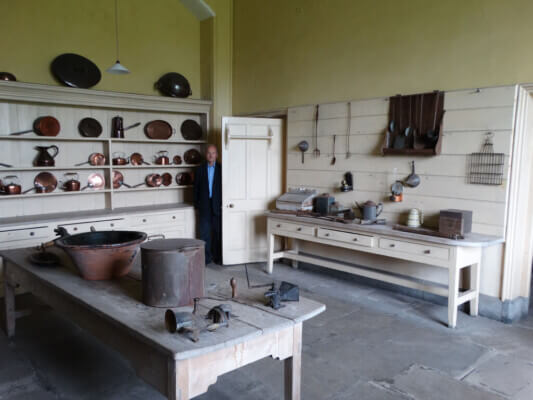
If you’re visiting Tullynally Castle on a Sunday, you’re in luck as guided tours are available at 3 p.m. You’ll see the castle’s beautiful Victorian kitchen and laundry facilities and learn about the lives of the servants who worked there in the 19th and early 20th centuries.
Tickets for adults are €7, for children over 3 years, €3, and €18 for a family of 4.
Just over an hour from the castle is Clonmacnoise, one of Ireland’s most significant monastic sites and also a great choice if you're thinking about interesting day trips from Dublin.
Situated along the River Shannon, Ireland’s longest river, this peaceful place is as tranquil as it is beautiful.
Try to imagine what it must have looked like when monks lived in small huts surrounding the churches, crosses, and towers that made up Clonmacnoise.
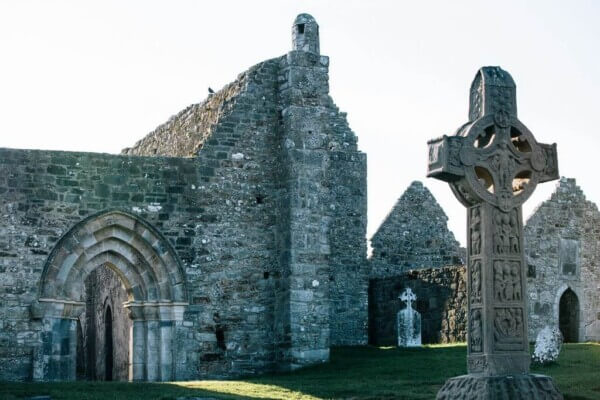
Founded by St. Ciaran in the fifth century, the monastery attracted a large number of other monks from across Europe, who came to study and pray here.
Most of the ruins that you will see at Clonmacnoise date from the 10th to 12th centuries.
The site was burned and pillaged several times by the Vikings, the Irish themselves, and the Normans.
In 1552, English troops stationed in Athlone left it in ruins.
Purchase tickets at the visitor center and read more about the monks who lived there. The cost for adults is €8 and €4 for children.
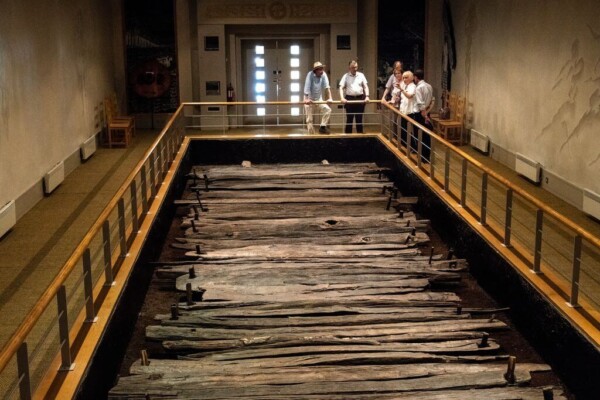
Drive north for 50 minutes and you’ll arrive at The Corlea Trackway in County Longford, an Iron Age bog road that was constructed from oak planks. It is one of the county’s most fascinating attractions.
Be sure to stop by the visitor center where you’ll see a 59-foot-long stretch of the road that has been carefully preserved.
While today, the surrounding landscape is relatively flat, back in the Iron Age, the area was covered by bog, quicksand, and ponds and surrounded by dense woodland.
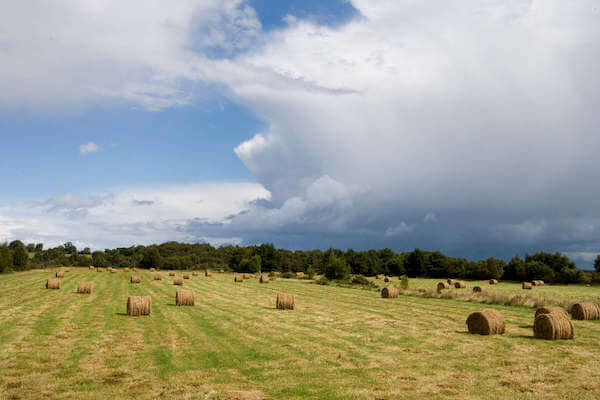
Guided tours are available at the attraction, which is free to visit.
Does a guided day trip from Dublin sound like your cup of tea or would you rather have the freedom to drive around Ireland and explore these wonderful sites yourself?
Let me know in the comments below and as always, feel free to sign up for my regular e-newsletter, where you’ll find additional information on how to travel to Ireland on a budget.

